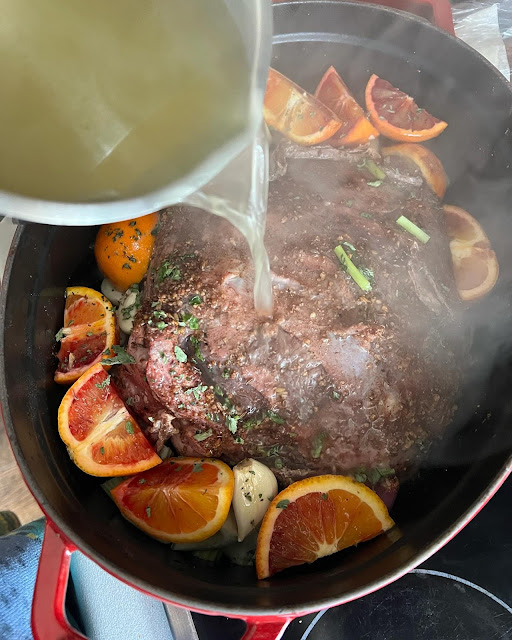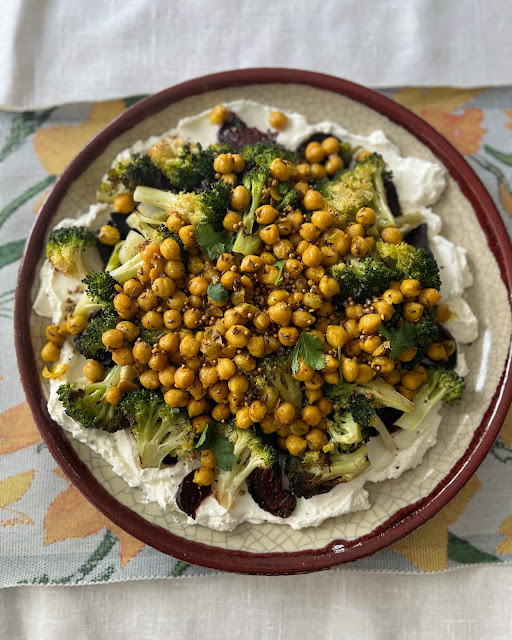Easter last year was on March 31st in 2024, exactly a year ago (well, one year tomorrow). As I am planning the menu for this year's Easter on April 20th, it's a good to time to look back to the previous brunch.
We've been hosting an Easter brunch on an Easter Sunday for over a dozen years now and it's one of the entertaining highlights for me. I love Christmas, don't get me wrong, but while Christmas is all about family, then Easter is all about friends, so they are two very different occasions. Also - while Christmas traditions seem to be more set in stone, sorry, traditions, then Easter gives much more opportunities to try something new. I think the only Easter constant is the traditional pashka dessert :)
Here's the Facebook event cover from 2024 - we had 27 people around, including ourselves:
And here's the menu (in Estonian):
We usually set the whole table at once, so it's buffee-style or "Swedish table", as we say in Estonian ("rootsi laud"). Not the best of photos, but you get an idea.
We started with some cold cuts and starters. We had some fish preserves from our skiing trip to Ruka, Northern Finland. Our friend Piret brought along some of her home-made and delectable cep/porcini mushroom preserves.
I made some
rye canapes with smoked tofu and cucumber (on the photo at 2 o'clock from the apples, recipe in Estonian
here). A really nice vegan canapé - I used a local smoked tofu, a Fiinish fermented oat cream, some red onion, lemon and some seasoning. Tastes a bit like a smoked fish salad and looks really nice garnished with fresh cucumber and some micro greens. (See yourself
here).
There was a big bowl of
fresh cabbage salad with Green Goddess dressing. (Pictured on the top left corner above)
. I know some versions of this dressing also use anchovy, but I make a vegetarian version with either sour cream or Greek yogurt, avocado, garlic and different herbs (usually basil, parsley, cilantro/coriander). Again, you'll find the recipe in Estonian
here.
Two of the dishes were inspired by
Yotam Ottolenghi, as recommended in the Guardian (see
here). One was vegetarian, a fennel and pepper gratin, which I served
sans cheese and bread crumb topping;
(Recipe in Estonian
here; in English
here).
The other was a
spiced Easter lamb with marmalade glaze, which was absolutely wonderful and flavoursome. We often serve lamb at our Easter brunch and this did not dissappoint. (You'll find recipe in English
here and in Estonian
here).
When I was still living and working in Scotland, but already dating K, we met up in Paris for a romantic getaway May 2006 - almost 19 years ago. The date went well, obviously, as I decided to move back to my homeland 5 months later - and we're still living together 19 years on, parenting our three lovely kids etc. Anyway, during that weekend in Paris, we had a delicious spinach and smoked salmon quiche at a small deli-cafe near Luxemburg garden. I later recreated that quiche and we still make it regularly - and it always brings back nice memories of that first trip to Paris. (We went back to Paris to celebrate our tenth anniversary and since then we've been there with our kids as well.)
One of my favourite dishes at the brunch was this warm roast beetroot and broccoli salad with spicy chickpeas - a recipe from an Estonian food writer Rita Osa (recipe in Estonian
here).
I had planned to make Nigella Lawson's
cherry tomato couscous, but had run out of couscous, so used fine bulghur instead. It worked really well (recipe in Estonian
here).
For sweets, I made pecan brownies, using my regular - and favourite
brownie recipe.
We also had some fresh fruit and berries on the table, as well as cheese. My friend Liina brought along a curd cheese cake (
kohupiimakook) and of course we had
home-made pashka:
So, have you started thinking of this year's Easter menu already? What dishes are on the long list at the moment? Let me know in the comments.
From the archives:
We've hosted an Easter brunch for friends annually since 2007 (I moved back home to Estonia and in with K. from Scotland in October 2006, so it's 'our thing'). I see I have a lot of catching up to do :)











